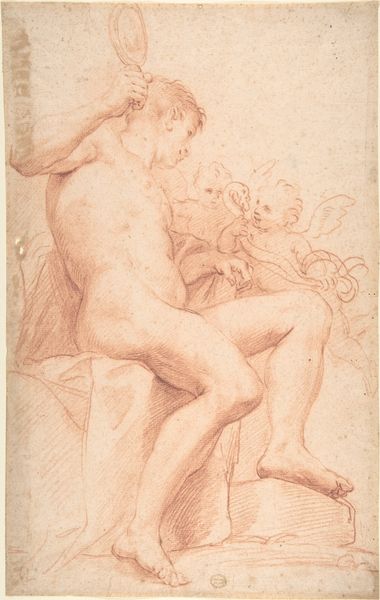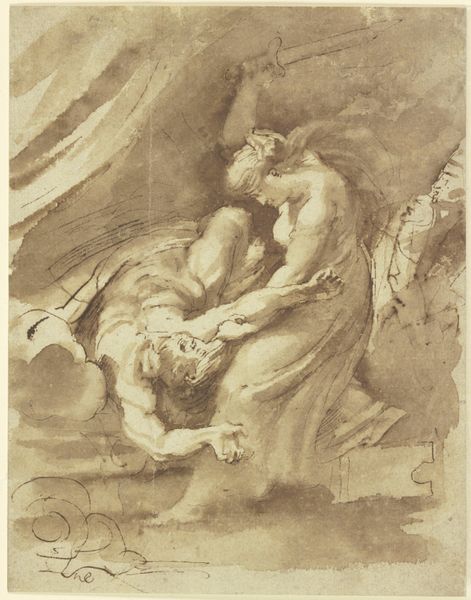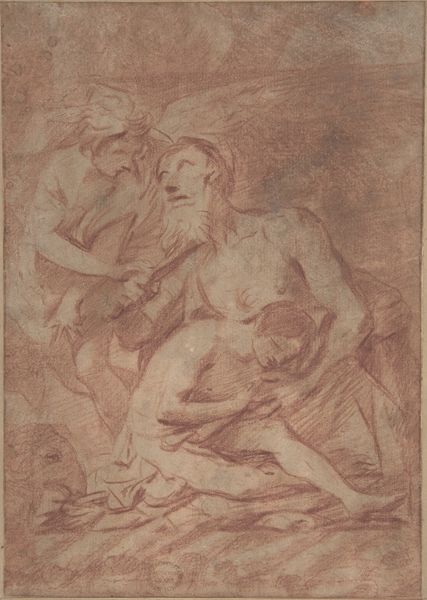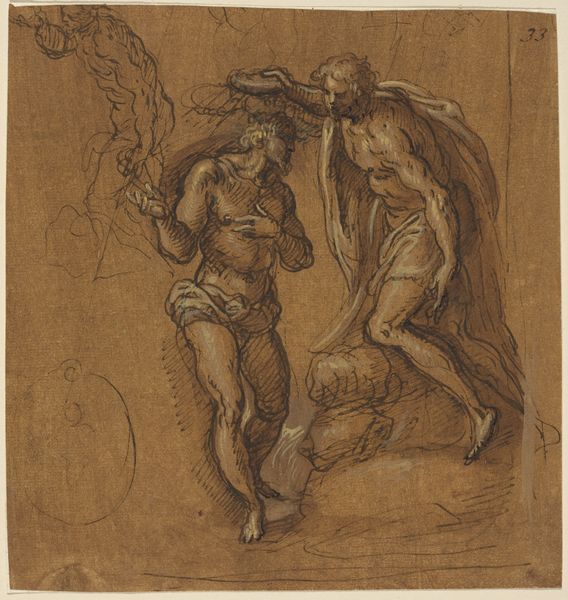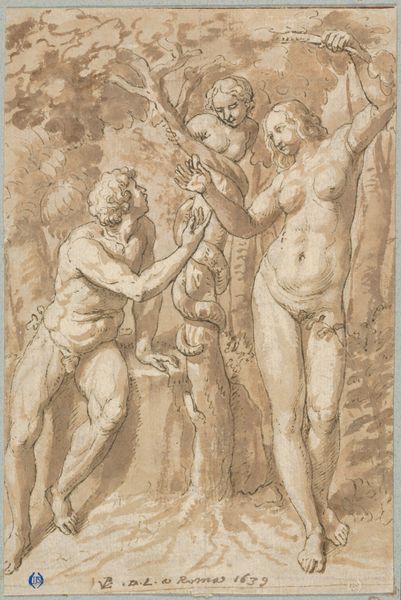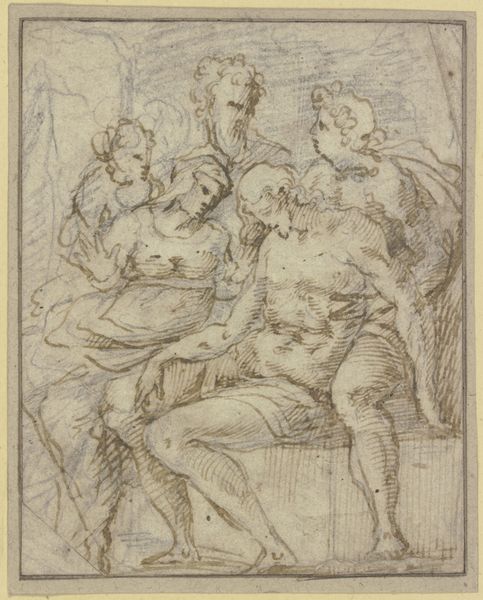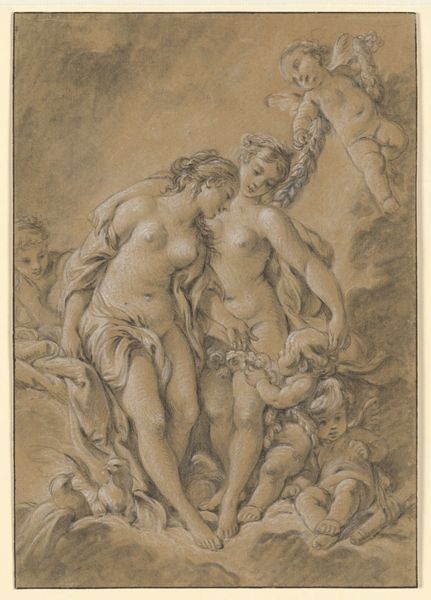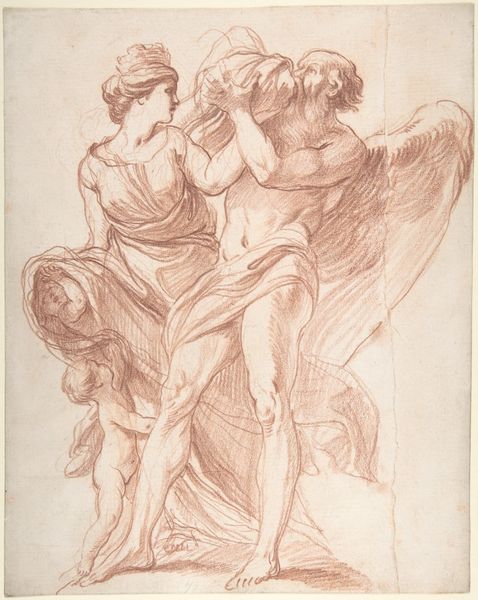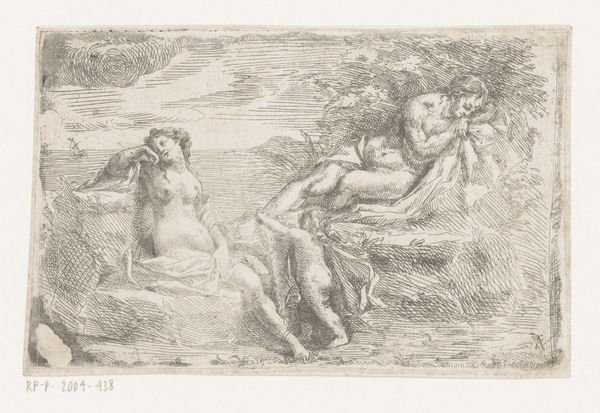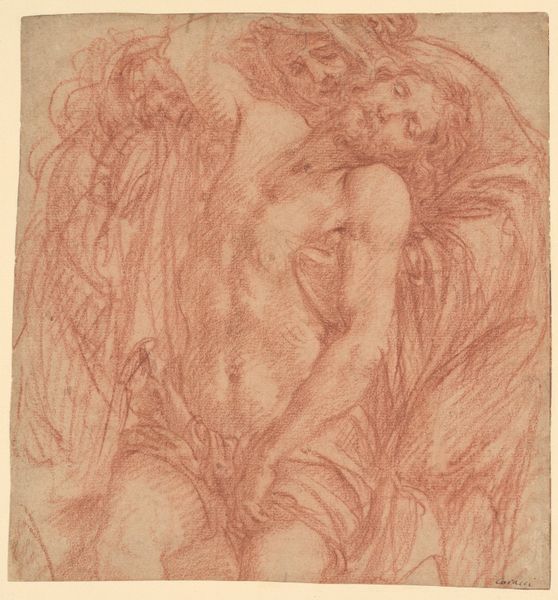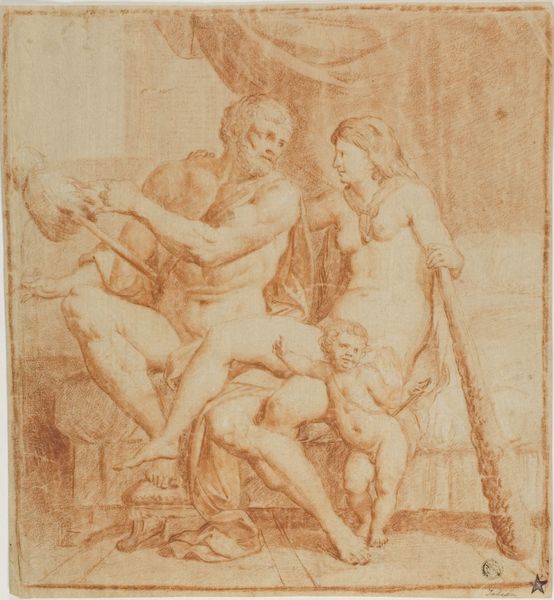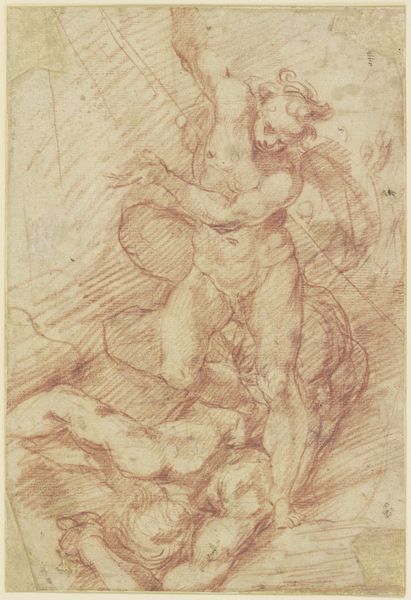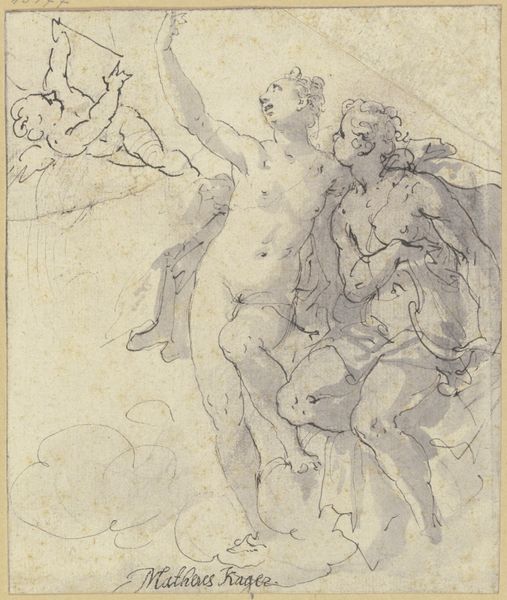
Tre kvinder, den ene med en dobbeltfløjte, siddende i et landskab 1500 - 1583
0:00
0:00
drawing, pencil
#
portrait
#
drawing
#
charcoal drawing
#
figuration
#
pencil drawing
#
group-portraits
#
pencil
#
portrait drawing
#
italian-renaissance
Dimensions: 308 mm (height) x 259 mm (width) (billedmaal)
Curator: Immediately I'm drawn to the emotional intensity radiating from these figures. It's as if their gazes are charged with meaning. Editor: I see that, too. You are looking at “Three Women, One with a Double Flute, Sitting in a Landscape.” This Italian Renaissance drawing, dating back to the 16th century, is attributed to Pirro Ligorio, and employs pencil to depict three figures, somewhere between portraits and mythical figures. The setting implies a larger cultural context of Renaissance ideals, yet also creates a world all of its own. Curator: The flute is immediately striking – it begs the question of music’s role. Beyond entertainment, it becomes a symbol of harmony, balance, even ecstasy within Renaissance society, linking them to Muses perhaps, and therefore elevated pursuits. The Renaissance certainly embraced a renewed appreciation for the arts, sciences, and classical ideals, and the flute ties this into classical themes. Editor: Precisely. Ligorio often focused on the socio-political functions of art. The placement of these women in a landscape elevates them from simple portraits. This connects to classical imagery but also suggests an intellectual or artistic circle; that it depicts a sphere that both produced art and that these works reflect them as elite women within that creative setting, actively supporting the arts. The double flute suggests a symbolic order that gives this work social complexity. Curator: It’s an interesting play with the power dynamics and status that female figures would convey then. Their confident postures—the directness of the gazes—these details give this drawing a palpable energy, inviting viewers to become part of their conversation, part of their space. I see strength and self-possession, not just pretty faces, or ornamental portraits for powerful families to solidify social status and lineage. The art here takes on an almost modern feel, because the figures possess self-agency and expression that defies a narrow understanding of gender roles. Editor: I concur. I come away considering the potent symbolism and also the artist's perspective during the late Renaissance. It’s more than art, but a revealing look into art’s very place in culture then.
Comments
No comments
Be the first to comment and join the conversation on the ultimate creative platform.
